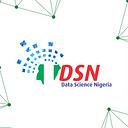Mapping Our World: The Evolution of GIS and DSN’s Contribution
“GIS is about uncovering meaning and insights from within data,” said Jack Dangermond, CEO of Esri. This statement encapsulates the transformative journey of Geographic Information Systems (GIS), which have evolved from simple mapping tools to engines of innovation and data-driven solutions.
World GIS Day, celebrated every third Wednesday of November, highlights GIS’s vital role in shaping industries and solving real-world challenges. It’s an opportunity to reflect on how GIS revolutionizes urban planning, healthcare, agriculture, and environmental conservation, offering insights that enhance decision-making and drive progress.
The Evolution of GIS
The story of GIS began in 1854 with British physician John Snow’s cholera map, a pioneering example of spatial analysis. The computer age brought Roger Tomlinson’s development of the Canadian Geographic Information System in 1962, recognized as the world’s first computerized GIS. This innovation laid the foundation for managing natural resources and land use.
Subsequent breakthroughs included SYMAP, the first computer mapping software by Howard Fisher in 1965, and the establishment of Esri in 1969, which later introduced ArcGIS, the industry standard. By the 1990s and 2000s, open-source platforms like QGIS democratized GIS access, while Africa saw the technology transform healthcare, agriculture, and wildlife conservation.
DSN’s Role in Advancing Geospatial Technology
At Data Science Nigeria (DSN), we harness geospatial technology and Artificial Intelligence to discover, create, and optimize opportunities for individuals, businesses, and communities. Projects like Geo Spot-on showcase our expertise in geographical nano-behaviors, delivering precise, actionable insights.
Our innovative data visualizations align with the United Nations Sustainable Development Goals (SDGs). Notably, our Zero Hunger (SDG 2) visualization using Earth observation data was recognized among 33 honorable mentions in the U.S. government’s Pale Blue Dot Challenge, sponsored by NASA.
DSN leverages geospatial solutions to enhance reproductive, maternal, newborn, child, and adolescent health and nutrition (RMNCAH-N). Our RMNCHN Decision Support Dashboard and Chatbot, implemented in Kaduna, Kano, Lagos, and Gombe states, provides critical support for healthcare delivery.
Our commitment extends to fostering innovation across Africa. In a pan-African hackathon, we engaged Nigeria, Kenya, Senegal, and South Africa to address local health challenges with geospatial and mobility data, awarding a $10,000 grand prize for groundbreaking solutions.
Driving Collaboration and Skills Development
DSN co-hosted the inaugural Geospatial Machine Learning Workshop with InstaDeep at the Deep Learning Indaba 2023 in Ghana, attracting over 100 participants and featuring industry experts from organizations like Google Research Accra, WorldPop, and ESRI.
Through our DSN Geospatial Community, professionals and enthusiasts connect, collaborate, and grow. Biweekly webinars provide hands-on experience with geospatial tools, ensuring members stay at the forefront of this dynamic field.
Conclusion
From disease tracking to optimizing health outcomes and advancing SDGs, GIS remains a cornerstone of innovation. As we celebrate World GIS Day, DSN reaffirms its commitment to leveraging geospatial technology for meaningful impact, empowering communities, and driving data-driven progress across Africa.
References:
https://www.esri.com/en-us/what-is-gis/history-of-gis
